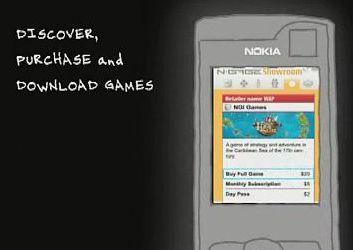Ready, aim...
 There has been an endless amount of text written about mobile gaming and the original N-Gage smartphone, much of it driven by personal taste ("I never use phone games" or "I never use games consoles") rather than a balancing of the facts.
There has been an endless amount of text written about mobile gaming and the original N-Gage smartphone, much of it driven by personal taste ("I never use phone games" or "I never use games consoles") rather than a balancing of the facts.In order to cut through all the ideological hot air, this article will just look at the problems and successes of the first generation of N-Gage as if they were many individual targets to be hit or missed: to succeed with its Next Gen Games Platform, Nokia must deal with the failures of the old N-Gage whilst preserving the things that worked.
 The Successes of the N-Gage
The Successes of the N-Gage
1. N-Gage Arena
When console maker Sega left the hardware world after the Dreamcast stopped production, they sold their online division to Nokia along with many members of staff and a gaming network called SNAP. Nokia turned this bundle of talent and infrastructure into their greatest success so far in the portable online gaming world: the N-Gage Arena. What Xbox Live is to home gaming, N-Gage Arena is to mobile gaming. It features a single login for all games and community functions, truly mobile online gameplay wherever the phone works (no need to be tethered to hotspots), and one of the most well-motivated and intelligent group of moderators and forum participants on any gaming site.
 2. Nokia First Party Games
2. Nokia First Party Games
Despite their hamfisted launch of the N-Gage itself, Nokia managed to prove itself a very capable first party games publisher. After a slightly shaky start with Ashen, most Nokia titles proved to be the finest smartphone games ever created: Pathway To Glory, System Rush, Glimmerati, High Seize, Mile High Pinball, ONE, Rifts and Snakes all received excellent reviews.
3. The Promotion of Pocket Kingdom
The promotional drive for Pocket Kingdom (a Massively Multiplayer Online game from Sega and exclusive to the N-Gage) somehow managed to generate a huge amount of positive publicity for the system, even winning the support of the ever-cynical game site Penny Arcade. The publicity surrounding Pocket Kingdom managed to come closer than anything in turning around the N-Gage's reputation with the professional gaming media.
 The Problems of the N-Gage
The Problems of the N-Gage
1. N-Gage was a great smartphone, but it was seen as a disappointing console
Despite the claims of Nokia's publicity machine that the N-Gage was a games console with a phone built into it, the N-Gage hardware contained absolutely no gaming-oriented features and was almost identical to the Nokia 3650 smartphone. The only thing genuinely gaming-oriented about the N-Gage was its horizontal casing and button layout.
Nokia's botched marketing meant that smartphone fans (who would have appreciated the device's features) didn't really know about the N-Gage, while console fans (who just wanted a console, not a smartphone) were disappointed by things such as the one minute boot-up time, which was normal on smartphones but unheard of on consoles.
2. The N-Gage seemed expensive at $300 because handheld consoles cost less than half that
The N-Gage's $300 launch price was actually very low by smartphone standards and the hardware was actually a real bargain if you wanted a smartphone in 2003. Unfortunately many console gamers just wanted a console, and couldn't see where their $300 had really gone on the N-Gage because it was mostly spent on non-gaming features they never used.
 3. N-Gage's screen was vertical, while all other gaming platforms used horizontal screens
3. N-Gage's screen was vertical, while all other gaming platforms used horizontal screens
The N-Gage's vertical screen was a completely standard feature on smartphones, but seemed completely wrong when marketed as a console feature. The screen shape meant that ports of games from consoles just didn't work as well on the N-Gage as they were originally designed for a horizontal aspect ratio.
4. Changing games involved switching off, removing the cover, removing the battery, changing the gamecard, replacing the battery, replacing the cover, switching back on and waiting for the phone to boot up.
The memory card slot of the original N-Gage was buried deep inside because that was standard practice on smartphones at the time (and still is on many models). Blank memory cards are like smartphone HDDs: they have relatively large capacities, are designed to hold dozens or hundreds of applications and games at a time, and aren't intended to be removed very often.
Unfortunately on the N-Gage the memory card slot was used like the cartridge slot on a console, resulting in a disastrous mismatch between what the slot was designed for and how it was actually used.
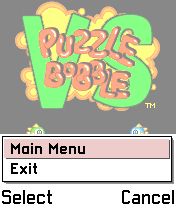 5. Most of the N-Gage's launch games were poorly implemented ports from other platforms
5. Most of the N-Gage's launch games were poorly implemented ports from other platforms
The launch games on any gaming platform are always weak, but N-Gage's lineup was particularly bad being entirely mostly dull ports from other systems. The N-Gage's first genuinely impressive and well-reviewed exclusive games didn't start to appear until a year later at the end of 2004, and although they won many reviewers over it seemed to make little difference to the N-Gage's sales.
6. N-Gage Games weren't widely available after the disastrous launch
The combination of low-selling hardware and low-selling launch games meant that lots of game retailers abandoned the platform within a few months. By the time the first genuinely good exclusive N-Gage games started appearing it was relatively difficult to find them in bricks-and-mortar retailers, even the ones that still stocked the launch games. By the end of the N-Gage's life it was impossible to find new releases in any physical shops.
7. N-Gage Games were really expensive compared to other smartphone games
N-Gage games cost about $40 at launch in America and $60 in Europe. These were very high prices to pay compared to other smartphone games (which is what N-Gage games were), and made people naturally compare them to console games rather than phone ones. This comparison didn't do N-Gage any favours, especially when the next generation of handheld consoles appeared in the form of the Sony PSP and Nintendo DS.
8. N-Gage didn't sell well, and so didn't have much support from third party game manufacturers
Former N-Gage executive Gerard Wiener said during an online chat event that third party support was crucial to N-Gage, but it was made difficult to obtain because the userbase of the platform was relatively low (N-Gage sold one million phones in its first year and another million the year after that).
9. N-Gage games were only officially available to one or two gaming-oriented models
An irony of the N-Gage's low sales is that the hardware itself sold incredibly well... just not with N-Gage printed on the cover. The N-Gage was a standard S60 smartphone, and S60 smartphones were and still are the most popular smartphones in the world. Annual sales of S60 smartphones are several times greater than all handheld consoles put together, and by rights the userbase of N-Gage games should have been the biggest in the world.
Unfortunately N-Gage games (which were technically just S60 smartphone games) had a DRM lock placed on them so they would only work on the N-Gage or QD. Pirates were able to get the games running on other S60 smartphone models by removing the DRM, but this option was never available legally and few people even realised it was possible. Those who wanted a normal-looking smartphone but also wanted N-Gage games were completely ignored by Nokia, even though it would have been incredibly easy to cater to them and would have greatly expanded their userbase.
10. The N-Gage name became a byword for bad games
Due to its poor launch sales, most of the gaming world seemed to make its mind up there and then that anything with the brand "N-Gage" on it wasn't worth looking at. These rather bigoted attitudes proved remarkably resilient, and the overwhelmingly positive reviews that the later N-Gage QD model and games of 2004/2005 received seemed to make no difference. The N-Gage name itself became a liability rather than the neutral or positive label it ought to have been.
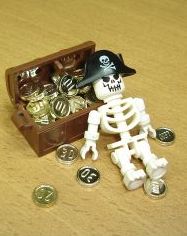 11. Piracy
11. Piracy
The combination of high game prices, very poor distribution to retailers and difficulty changing gamecards on the original N-Gage made pirated games very tempting even to people who would normally purchase a legal copy. In most countries you simply couldn't buy the latest N-Gage games after the launch because shops didn't stock them any more. For most people it became far easier to obtain pirated N-Gage games than legal ones.
12. Sidetalking
In late 2003 Nokia floated the idea that people might want to talk into their phones edge-on rather than flat against their face, with the N-Gage being first and only model to implement it. Sidetalking, as it became known, was not a popular option, and was touted by critics as yet another problem with the N-Gage. The later N-Gage QD model removed sidetalking, but the damage had been done.
13. Idiot Salespeople in Games Shops
There was much anecdotal evidence from the N-Gage Arena boards that people who went to buy N-Gage games in physical shops in the years after the launch were criticised by the shop assistants instead of just being served. Immature, irresponsible behaviour by shops? Yes. Bad for N-Gage sales? Definitely.
...Fire!
So, how well does Nokia's Next Gen Gaming Platform manage to hit these targets? Let's see!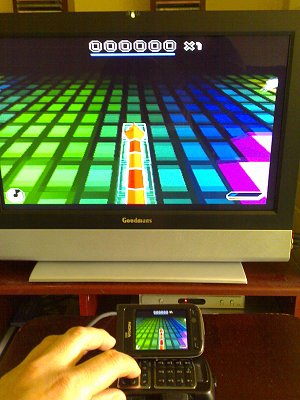 Shot One: The Next Gen gaming platform will be available on a wide range of the latest S60 smartphones at launch, with the number of compatible models increasing over time.
Shot One: The Next Gen gaming platform will be available on a wide range of the latest S60 smartphones at launch, with the number of compatible models increasing over time.
Targets Hit: Problem 1, Problem 2, Problem 8, Problem 9, Problem 12
Why: If the new games run on normal-looking smartphones marketed as smartphones, Next Gen titles will be compared with other phone games and look pretty darn good. The price of the smartphones won't seem unreasonable, and indeed many people will get them as "free" upgrades from their phone network operators. And because the latest S60 phones are already very popular, the games will receive a far larger userbase than they ever had on the N-Gage or QD right from day one, which should make third party support much easier to obtain. And of course if the games are available on many different models, people will be able to pick the phone model they like best instead of having to commit to a gaming model.
Targets Left: Problems 3, 4, 5, 6, 7, 10, 11 and 13
(reload)
Shot Two: Next Gen games will be available to buy as downloads directly onto the phone (thorugh 3G or wi-fi) or onto a PC and then transferred onto the phone (like music is from iTunes onto the iPod).
Targets Hit: Problem 4, Problem 6, Problem 11, Problem 13 and (probably) Problem 7
Overall: By selling games as downloads, the problems of changing games and finding games for sale are instantly wiped away. All games will be available on their release day to anyone who has a compatible phone, and they can store many games on a single memory card. The Next Gen games will be as easy to buy and obtain as Java games which will greatly reduce the significance of piracy (although Java games are very widely available on the internet as pirated copies, their legal sales have remained high thanks to them being far more convenient to obtain legally than illegally). With no retailers involved in selling the games, the problem of snotty shop assistants is gone, and because there's no packaging or shelf space to worry about the prices of the games will almost certainly be significantly lower than the $50 level at the N-Gage's launch.
Targets Left: Problems 3, 5 and 10
(reload)
Shot Three: Several Next Gen-compatible models will have horizontal screens.
Targets Hit: Problem 3
Overall: With the S60 smartphone platform moving to its 3rd Edition, the screens of S60 smartphones now have far higher resolution and far more flexibility than in the days of the N-Gage, and horizontal models and games will be available on the Next Gen platform. The latest S60 3rd Edition smartphones can support a wide range of screenshapes such as horizontal, rectangular and square while still being compatible with the majority of applications and games.
Targets Left: Problems 5 and 10
(reload)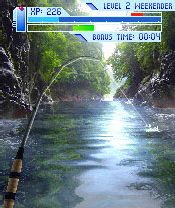 Shot Four: There will be exclusive First Party games available at the launch.
Shot Four: There will be exclusive First Party games available at the launch.
Targets Hit: Problem 5
Overall: Having had their fingers burnt with the 100% ported launch for the original N-Gage, Nokia has a lineup of four to six first party games which will be available at or near the launch of the Next Gen platform. This is perhaps the best example of them learning from the original N-Gage, as they've gained experience making good, well-reviewed smartphone games.
Targets Left: Problem 10
That's almost all of the targets hit!
All but one...
Problem No. 10: The Name
The above hail of bullets hits virtually every target, and the Next Gen gaming platform should go a long way to resolving many of the problems of the N-Gage, largely by allowing smartphones to be smartphones instead of pretending to be consoles, and allowing people to choose an up-to-date smartphone that suits their needs without having to sacrifice its ability to play Next Gen games.
But this leaves one problem still to be resolved by Nokia: the N-Gage name.
The N-Gage brand has a very very low reputation in the gaming community. Ironically enough this is by far the easiest problem to deal with, Nokia could simply use a different name for its Next Gen gaming platform. It would cost very little to do and could be done virtually overnight.
Of course it may be that the success of the Next Gen platform doesn't really depend on the gaming community at all. The gaming community as a whole is far far smaller than the phone-using community: there are over 1000 million phones sold every year, of which about 350 million are Nokia models, both of which dwarf the 25 million handheld and home consoles sold annually. If Nokia's Next Gen platform reaches just 2.5% of phone users as a whole, or just 7.5% of their own customers, the platform would become bigger than the entire home and portable console userbase of Sony, Microsoft and Nintendo put together.
But it's unlikely that anyone would buy the Next Gen games because of the N-Gage name, at best they would be either unfamiliar with the name or have no strong feelings about it.
As a brand the N-Gage name is worthless at best, and a severe liability at worst, and many people will unfairly make fun of the platform or its games purely because they have the N-Gage name attached to them. It's difficult to see why Nokia are willing to risk what is a potentially excellent gaming platform with potentially excellent games by using a spoilt brand name.
Even if the Next Gen platform rescues the N-Gage brand name and restores its good reputation, why make life difficult by setting yourself such a task? Why not just start with a clean slate and a new name?
If anyone in charge of the Next Gen Gaming Platform is reading this article, please ask yourself whether it's worth risking all the excellent and difficult work you're doing purely for the sake of the following logo:

